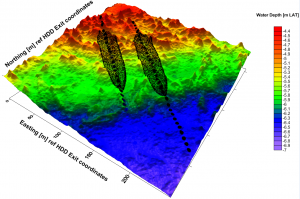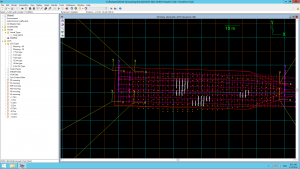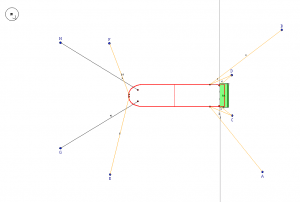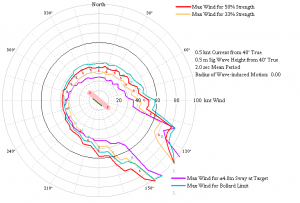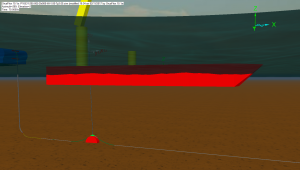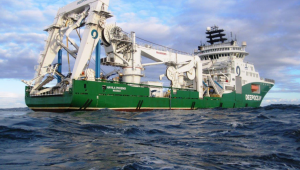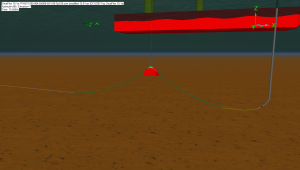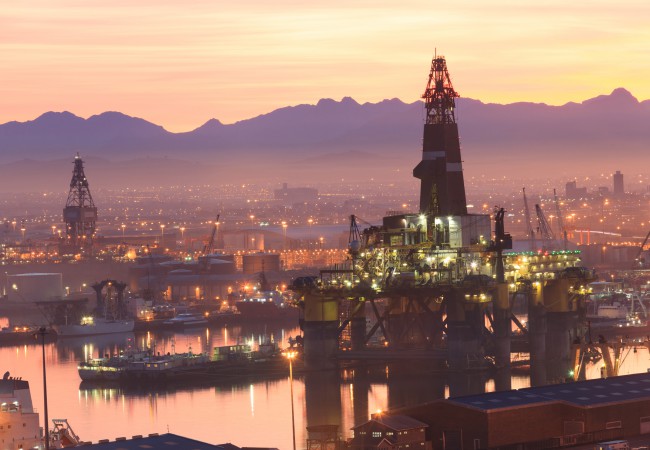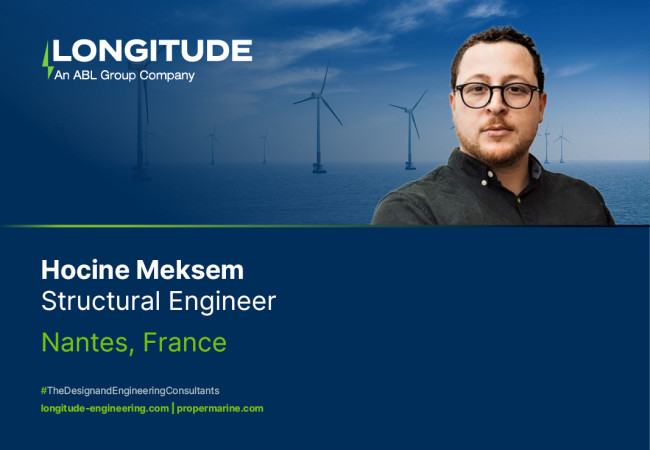Longitude were instructed by Deep Ocean UK (DOUK) to undertake an array of engineering analysis scopes to support the installation of two export cables for the East Anglia One Offshore Windfarm. Longitude worked with DOUK, and several other interested parties such as MWS and owners of existing subsea assets to provide the full analysis set including grounding and mooring of the Maersk Connector, cable free lay, pulling analysis, plough launch and joint laydowns.
East Anglia One: Project Overview:
The development site is located in the southern North Sea within the south-eastern area of the East Anglia Zone. The East Anglia ONE site covers an area of approximately 300 km², and is located approximately 45 km southeast from the town of Lowestoft. A total of 102 wind turbines are to be installed generating a power output of 714 MW which need to be exported to the national grid.
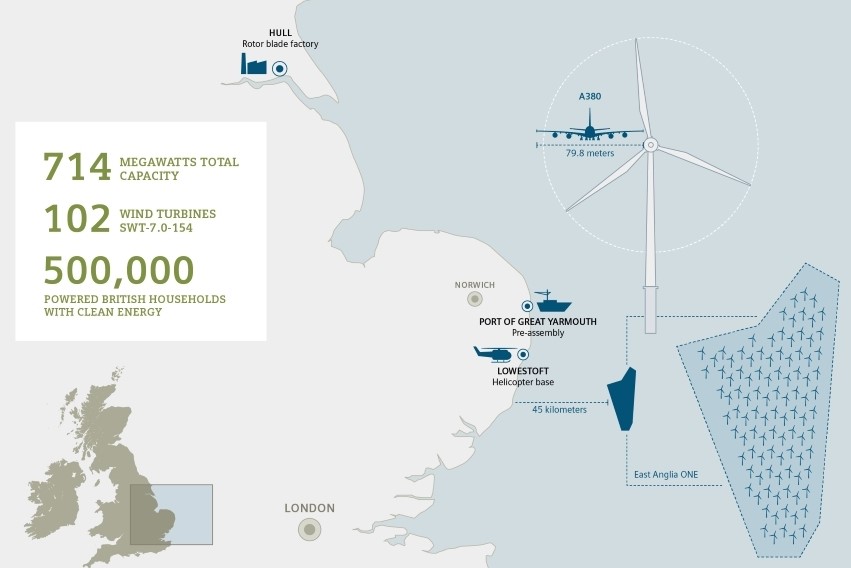
Deep Ocean were contracted by Nexans to install the two subsea export cables between the shore Transition Joint Bay (TJB) and the Offshore Sub-Station (OSS).
Longitude’s Scope of Work
Nearshore
- Cable lay vessel shallow water RAOs generation and motion analysis
- Working with geotechnical subcontractor to define the seabed response, hull pressures and likelihood of scour during grounding
- Full dynamic analysis of the vessel grounding in OrcaFlex including non-linear soil models, interaction of hydraulic damping between vessel and seabed and assessment of the bathymetry profile
- Development of the design basis for mooring and tow / tug assistance
- DP capability analysis and skidding mooring analysis for both cable routes
- Skidded mooring analysis using MOSES accounting for anchor embedment and avoiding UXOs and AEZs
Loadout
- Alongside mooring analysis at Nexans loadout facility using Optimoor
Installation
- Industry standard software OrcaFlex used for all installation analyses combined with automation scripts and bespoke tools developed exclusively by Longitude
- Simultaneous lay and burial of both export cables (3 x types)
- Cable lay standby analysis
- Cable abandonment and recovery
- Landfall pull-in through HDD duct – both floating cable and grounded vessel considered
- Plough launch and recovery analysis – both into the HDD trench and full route capability assessment
- 1st end initiation and first end pull-in at the offshore substation
- 2nd end pull-in using the Havilla Phoenix – modelled the control system for heave compensation system on the crane to limit quadrant motions
Engineering Support
- Dedicated team of experienced engineers on hand to support throughout the project
- Dynamic adaptation to changing project requirements
- Through-project engineering support and high level of flexibility due to parametric modelling and automation procedures implemented by Longitude meaning changes to original plans could be implemented with limited additional time and cost

